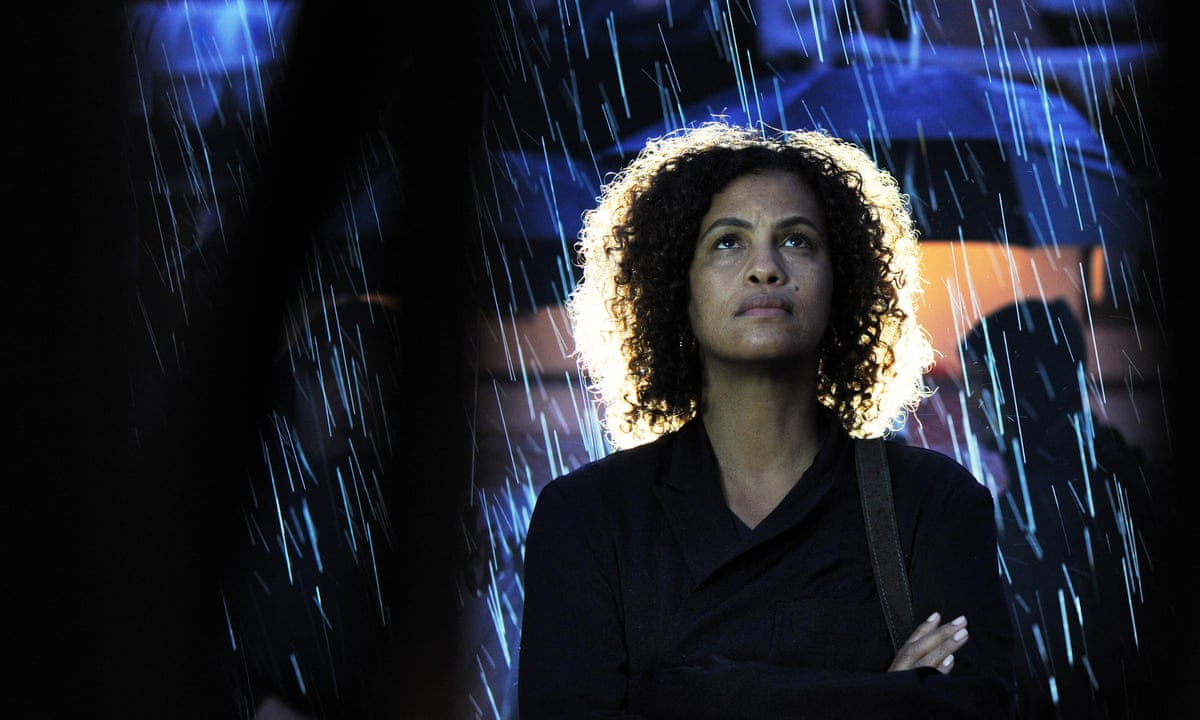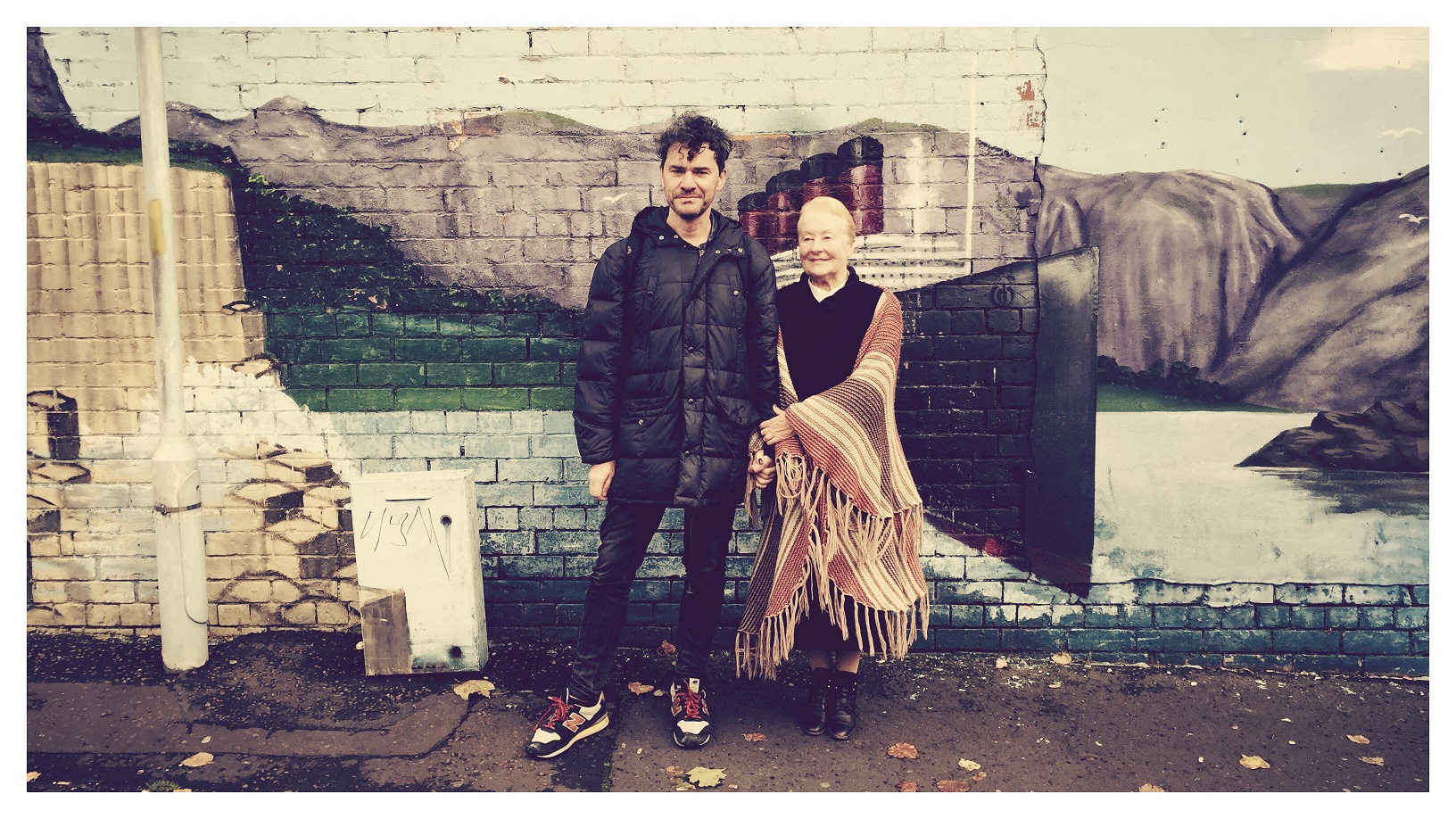Filmosophy: Being Charlie Kaufman
16 October 2017
Is Charlie Kaufman a philosopher? Many believe so. His films are increasingly screened in...
We can’t wait for you to explore, meditate on, and enjoy this extensive and fascinating collection of cinema, brimming with inspiration, passion, optimism, and much more... Here, Mark Cousins discusses eleven things that recur in his filmmaking and his films.
I love cities, and sometimes dream that I will run out of cities to see. I feel calm, anonymous and alert in cities. I am Belfast and Stockholm My Love are about the cities in their titles, What is this Film Called Love? is set in Mexico City, Here Be Dragons is about a trip to Tirana (Albania), and my home city of Edinburgh appears in lots of the movies, especially The Story of Looking.
I use a lot of music – musicals and road movies are my favourite genres - and love working with great musicians like David Holmes (I am Belfast and The Storms of Jeremy Thomas), Neneh Cherry (Stockholm My Love), Donna McKevitt (The Story of Looking), Melissa Hui (The First Movie) and Mogwai (Atomic: Living in Dread and Promise). And PJ Harvey kindly provided us with music for What is This Film Called Love?.

If I have time, I’d prefer to walk 5 miles than take a bus, so my films are full of walking: Stockholm My Love, I Am Belfast and What is This Film Called Love? are entirely walks. I think and see better when I walk.
I’m best known for my films about cinema, which include The Story of Film: An Odyssey, Women Make Film: A New Road Movie Through Cinema, A Story of Children and Film, The Story of Film: A New Generation, Here Be Dragons (about a film archive in Albania), Storm in My Heart (about Lena Horne and Susan Hayward), Cinema Iran (a history of Iranian cinema), Bigger Than The Shining (about Kubrick’s film and Nicholas Ray’s) and The Eyes of Orson Welles. I usually don’t take a straight historical approach in these movies. Instead I aim for a passionate internationalism and a kind of poetics. I’m very pleased that the first two of these films have influenced film culture and education in quite a few countries.

I don’t have children, but I love how absorbent and imaginative many kids are. I think inventiveness and play are synonyms, and I still feel quite childlike myself. The First Movie is about the inventiveness of kids who were brought up in a war zone (I was brought up in the Irish Troubles); A Story of Children and Film is a portrait of childhood using film clips; and in my projects with Tilda Swinton (including Dear Georges Melies) we have often focussed on kids, especially at the age of 8 ½.
Beneath the surface of my films, there’s often a sense of fortitude. As I mentioned, I was brought up in Belfast; I was also in the siege of Sarajevo, filmed in Kurdish Iraq and have spent time in other places, such as Iran, where life is tough and governments are oppressive. And yet, again and again, I’ve seen people recover from bad experiences. My partner works with people who have complex trauma and they see the same. So there’s a basic optimism in my cinema especially, I think, in I am Belfast, The Story of Looking and The First Movie.
From my school days (when I was bullied by some lads), I’ve had a healthy disrespect for male stereotypes, and most of the key people in my life have been women. I’ve also been lucky enough to work with some of the most creative women in cinema, many of whom reject gender generalisations. In Life May Be Mania Akbari and I to and fro on this, in Stockholm My Love and I am Belfast, Neneh Cherry and Helena Bereen are my avatars, Bigger Than the Shining is about male rage, and Women Make Film was a radical attempt to look at the movies that were made by women without making any generalisations about gender.

I was brought up in a small place which was further under a bell jar because of its low temperature war, so when I got to spread my wings, I did. I drove from Scotland to India, for example, and have always felt the global aspect of movie language. I know there are many cultural specifics, but Iranian and Indian films fuelled me – gave me a centrifugal imagination – long before I’d been to those countries. All of my films have benefited from that imagination.
Cinema is great at bodies. In my youth I was very shy about my own body but, when I overcame this, the feeling of release and relief was profound, so I’ve emphasised the bodies (including my own) in The Storms of Jeremy Thomas, 6 Desires: DH Lawrence and Sardinia, Life May Be, The Story of Looking and What Is This Film Called Love? Some people I know are like brains in a jar. I love such thinkers but am aware that in ancient times they talked about the rider and the horse – the rider is the mind, the horse is the body. I try to make my films about the rider and the horse.
I’ve made some overtly political films, for example Atomic: Living in Dread and Promise, Another Journey By Train (about neo-Nazis and Holocaust denial) and Gulf War: Scottish Eye (a TV doc about military training in the first Gulf War). But mostly the politics in my movies are beneath the surface. Some people said that Women Make Film would have been even better if it had been explicitly campaigning and calling for gender balance, but I hope that its power comes from the overwhelming evidence it presents, over fourteen hours, that women have used cinema as imaginatively as men. The Storms of Jeremy Thomas celebrates radical Englishness, The Eyes of Orson Welles emphasises the director’s political courage, Storm in My Heart challenges the Hollywood studios on how they treated people of colour, and Bigger Than the Shining is my most angry film about politics and masculinity.
I get bored (and sometimes angry) when the same old techniques are used again and again in movies, or dated ideas are trotted out. This is why I took innovation as the central thread in The Story of Film: An Odyssey and The Story of Film: A New Generation. Storm in My Heart (my most innovative piece) screens 2 films in full on a 4 square grid to look at feminism and racism in Hollywood; 6 Desires looks at a trip DH Lawrence did, but ends up being about form; Atomic had no narrator or obvious story, Women Make Film uses a 40 chapter structure (and won the European Film Academy’s inaugural Innovative Storytelling award, which made me happy); Life May Be had a new approach to present-tense video letters; Eisenstein on Lawrence invented an interview about the two of them; In What Is This Film Called Love?, a female narrator becomes a man, who then becomes a deer (!); and Bigger Than the Shining intercuts two Hollywood movies as if they were the same film. Of these eleven themes, this one is the most central.
Thanks for reading this. I spoke mostly about my feature length films, not my shorts (there are lots!) or TV work.
I’m grateful that you have seen some of my work.
Mark Cousins
Have a look at what's on to book a screening or event.
Still adding?
If you don’t want to view your Watch list right now, you can access your list anytime from your profile.